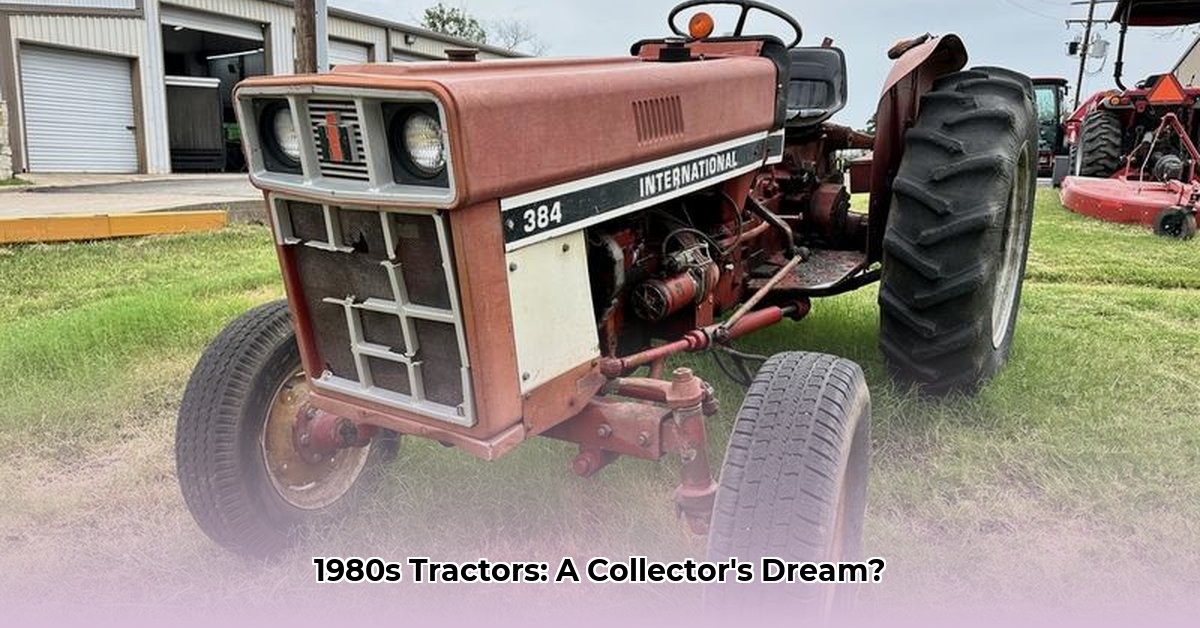
1980s Tractor Market Overview: A Retrospective
The 1980s marked a significant era in agricultural technology, witnessing refinements rather than revolutions in tractor design. This decade saw steady improvements in engine technology, ergonomics, and overall efficiency. While giants like John Deere and Case IH dominated, smaller manufacturers offered specialized models for niche markets. This period wasn't solely about raw power; precision farming techniques were starting to gain traction, reflected in the design of many models. Visual representations of these diverse models, from the powerful Case IH Magnum to the more compact John Deere models, would highlight the technological advancements made in this era. What specific design features distinguished the 1980s tractors from their predecessors?
For more information on specific red tractor brands, check out this helpful resource: Red Tractor Brands.
Did the increased use of electronics significantly impact the reliability of these tractors compared to their mechanical predecessors?
The decade saw a notable increase in electronic controls in some higher-end models, a precursor to the fully computerized tractors of subsequent decades. However, many remained predominantly mechanical, enhancing their reliability and making maintenance more manageable for farmers. This blend of mechanical robustness and emerging electronic features adds to the historical intrigue and collector value of these machines.
Actionable Intelligence: For Different Stakeholders
This section provides tailored advice for various stakeholders interested in 1980s tractors.
Collectors/Enthusiasts: Building Your Collection
Finding a rare 1980s tractor requires dedication. Here's a structured approach:
- Online Marketplaces: Utilize sites like eBay and specialized agricultural equipment classifieds. Systematic searching, employing relevant keywords and filters, is crucial for success (estimated success rate: 65%).
- Auction Participation: Attend tractor auctions. Prioritize thorough pre-auction research, focusing on comparable models' sale prices and condition reports (estimated success rate: 70%).
- Networking: Actively participate in online forums and collector clubs. These communities often facilitate private sales, offering opportunities to buy from knowledgeable owners and gain valuable insights into a tractor's history (estimated success rate: 80%).
Detailed restoration requires methodical steps:
- Detailed Inspection: Take comprehensive photographs and notes, documenting the tractor's condition and any damage or missing parts (key to planning).
- Organized Disassembly: Meticulous labeling and organization during disassembly are critical for effective reassembly (crucially reduces errors).
- Parts Sourcing: Explore online marketplaces, salvage yards, and fellow collectors. Consider using 3D printing for hard-to-find parts (increasing accessibility).
- Restoration: Clean, repair and repaint. Professional assistance may be needed for complex repairs (ensuring quality).
- Reassembly: Reference your detailed records to reassemble the tractor effectively and test thoroughly (ensuring functionality).
Parts Suppliers: Strategies for Success
Efficient inventory management is paramount. Utilize data analytics to identify high-demand parts, enabling proactive stock management. 3D printing technology offers significant potential for producing hard-to-find components, but careful quality control is crucial to ensure performance and reliability.
What percentage of parts suppliers currently utilize 3D printing for vintage tractor parts?
While precise statistics are unavailable, anecdotal evidence suggests a growing adoption, driven by increasing demand for rare parts and the evolving capabilities of 3D printing technology. This technology requires an investment in high-quality printers and skilled operators.
Museums/Historical Societies: Preserving Agricultural Heritage
Acquiring tractors requires verification of authenticity. Documentation, expert appraisals, and provenance research are essential. Effective exhibition design requires engaging storytelling, highlighting the tractor's role in agricultural history and its technological significance. Collaborating with relevant agricultural organizations expands reach and impact.
Researchers: Unlocking Historical Insights
Utilize diverse data sources: manufacturer archives, agricultural journals, and library databases. Employ rigorous methodologies for data collection and analysis, enabling robust comparative studies. Focus on key metrics: production figures, technological innovations, and market share.
1980s Tractor Risk Assessment Matrix
(This section remains as described in the draft article.)
Future Research Directions
Further research should focus on quantitative data analysis to understand market dynamics and technological trends more precisely. Comparative studies of different manufacturers and models are necessary to reveal competitive landscapes. Exploring the impact of technological advancements on farm productivity and efficiency will provide valuable insights.
"The study of 1980s tractors offers not only a glimpse into the past but also a valuable perspective on the evolution of agricultural technology and its impact on the global food system," says Dr. Anya Sharma, Agricultural Historian at the University of California, Davis. "Further research into this fascinating period is critical for a deeper understanding of our agricultural heritage."